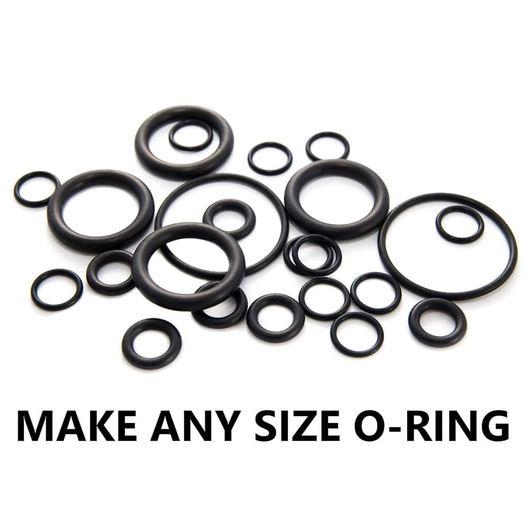O-Ring
Material : NBR/ FKM
Application: Cylinder
Type: O-RING
Performance: High Temperature,High Pressure
MOQ: 10pcs
Package: Plain bag
Description

Nitrile butadiene rubber (NBR Oring) is a copolymer of acrylonitrile and butadiene, also known as nitrile butadiene rubber or butadiene rubber. Because of its good tolerance to petroleum-based fuels and lubricating oil, NBR sealing ring is the best oil resistance rubber material, and relatively low price, is one of the most commonly used sealing elastomers.
What is NBR and Viton?
Two of the most commonly approved elastomers, Nitrile (popularly referred to as NBR or Buna-N) and Viton® (Fluorocarbon rubber). Both materials are a great choice for general industrial use, they offer excellent compression set resistance and have a versatile set of properties list of applications and properties.
Viton vs Nitrile in the durability category could be considered a tie, but it depends on the application and external elements. In summary, NBR seals are more durable in dynamic situations where flexibility is important, and Viton seals are more resistant to external elements and harsh conditions.
Nitrile Rubber
- Temperature: Nitrile is effective within a temperature range of -30°C to 100°C.
- General Suitability: Used for general purpose applications requiring resistance to aliphatic hydrocarbons, petroleum oils, water and hydraulic fluids.
- Environmental Properties: Nitrile vs Viton® is not resistant to degradation from weather and ozone exposure. Designed to resist most oils and lubricants, more importantly petroleum based lubricants, these seals have other benefits, such as superior abrasion and tear resistance, making them suitable for heavy duty industrial applications.
- Applications: A cost effective product, that works well with constrained temperatures and chemical resistance.
Viton® Rubber
- Temperature: Viton® seals can withstand temperatures up between -20°C to 210°C. Viton® seals are prone to failure below -15°C in dynamic applications, as they become inflexible and hard.
- General Suitability: Viton® is best suited for diverse sealing jobs that require high temperature and chemical resistance. Applications involving contact with petroleum oils, acids, silicone fluids and gases, halogenated hydrocarbons (trichloroethylene and carbon tetrachloride), aromatic hydrocarbons usually have seals and o rings made of Viton®.
- Environmental Properties: Viton® O-rings and seals have a wide range of chemical resistance (involving mineral acids, fuels, and oils) and this material is also highly resistant to oxidation, UV exposure, fungus, weather, ozone, and mould. This makes Viton® far superior to Nitrile in these regards. They are also designed to resist most oils and lubricants, more importantly petroleum-based lubricants.
- Applications: Viton® functions well in different automotive, chemical and appliance-processing industries.
- Cost: As an approximate guide, Viton® compound is ten to fifteen times more expensive than NBR. However, we stock both NBR and Viton O-rings and seals AS/BS, metric, French, German and other metric series at Polymax.
What is the difference between NBR and HNBR O-rings?
In comparison with NBR, HNBR has better abrasion resistance, tear resistance, high-temperature properties and resistance to chemical attacks.






